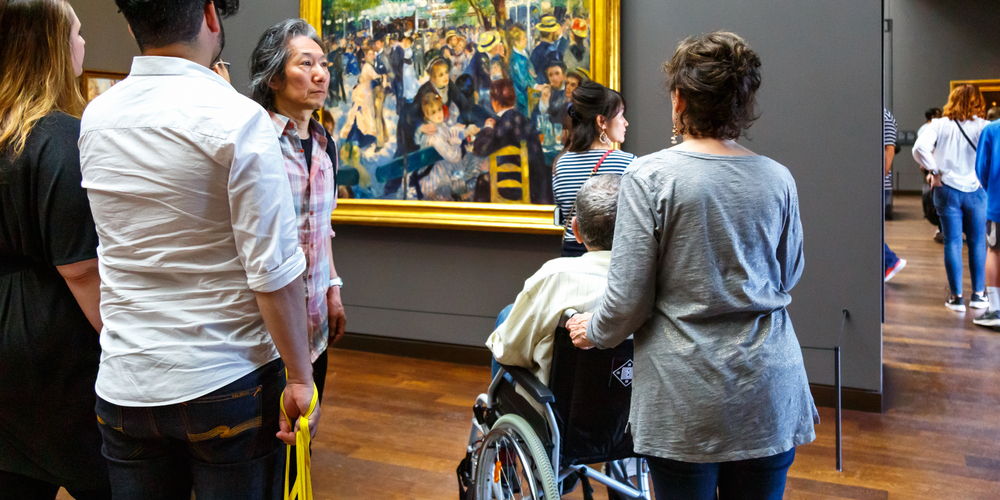
The Disability Discrimination Act (DDA) makes it unlawful to discriminate against a disabled person in the provision of services that are available to members of the public. Therefore the owners or overseers of a museum or gallery have a responsibility to provide a similar service for everyone, and they are contravening the law if they refuse or are ‘deliberately not providing’ their service to any disabled person.
In effect, any museum or gallery open to the public is required to ensure that they take the necessary measures to prevent the facility from being ‘impossible or unreasonably difficult’ for a disabled person to use. Accessibility dogs are frequently permitted for visually impaired people, and venues must do their best to provide access for wheelchairs.
Standard of service
This prevention of discrimination also extends to the standard of the service and the manner in which it is given. You can therefore reasonably expect staff to have received disability awareness training, and to be sympathetic and proactive when it comes to fulfilling different people’s requirements.
Varying facilities
However, this does not mean that all places are suitable for full disabled use. Many venues are still updating their facilities, and often have partial accessibility which can restrict the freedom of mobility impaired people. Due to the relatively new idea of placing aids in museums for visually and hearing impaired users, and using means to make exhibits easier to navigate for people with learning difficulties, these facilities are also not a certainty and you will need to check with each place that you intend to visit.
Finding out about accessibility
Every museum and gallery will be able to provide information on their accessibility. Unfortunately this can occasionally be vague, with some websites using only ‘partial’ or ‘good’ as indicators of their disabled access. It is of course your right to know a venue’s specifics, and in addition to phoning a location directly there are some useful resources on the web.
The Culture 24 website is perhaps the broadest of these. It provides listings of innumerable museums and galleries to visit across the UK, featuring an easy-to-use search function that allows you to type in the name of a site and find information about its specifications, including brief summaries of the disability access of each place. For speedy browsing there are also a number of simple pictures below each attraction’s name and picture, one of which corresponds, for example, to wheelchair access and another to visual disability facilities. This allows for instant facts if you are searching for a disabled friendly location, without having to navigate through several pages.
Similarly, Artsline is a charity specialising in disability access information, and while their scope is limited to London their search service on the web is even more exact. They profile art-related venues, offering a search facility that uses a tick box function allowing you to select the access features of most importance to your needs. In this way a quick search can answer questions such as whether all areas are wheelchair accessible or if disabled parking is readily available.